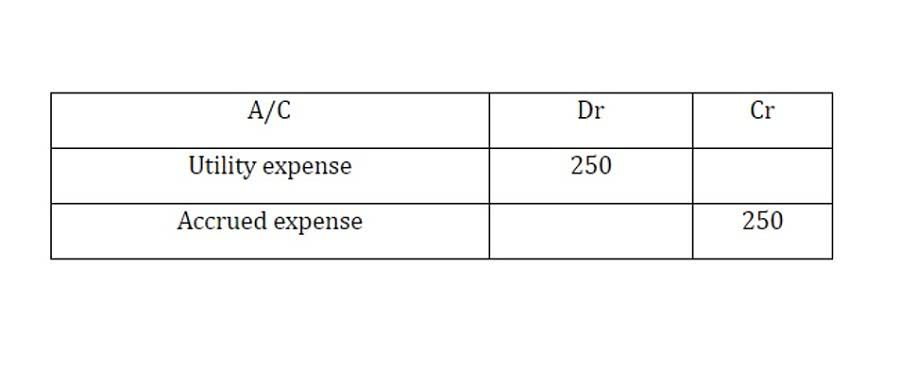
This eligibility is contingent upon correct payment and adherence to GST timelines, as failure to follow the ITC guidelines may lead to disallowance of the tax credit. RCM-compliant invoices must detail essential information such as transaction value, nature of the goods/services, and GST rate, without including a GST charge. Any business required to pay GST under RCM must register for GST, regardless of its annual turnover. This mandatory registration ensures that all entities liable for RCM transactions are included within the GST framework, contributing to a broader and more inclusive tax base.

Accrued Liabilities: Overview, Types, and Examples
- Here, RCM liabilities are documented in the “Tax on inward supplies liable to reverse charge” section.
- Voluntary registration is advantageous for those looking to avail of Input Tax Credit (ITC) on RCM payments.
- Unlike assets, which you own, and expenses, which generate revenue, liabilities are anything your business owes that has not yet been paid in cash.
- Accounts payable, accrued liabilities, and taxes payable are usually classified as current liabilities.
- Normally, when you buy goods or services, the seller charges GST and pays it to the government.
- This is crucial for accurate compliance and tax payment under RCM.
Liabilities play a crucial role in a company’s financial health, as they fund business operations and impact the company’s overall solvency. In business finance, a liability is an obligation that a company owes to other parties. This can range from money owed to suppliers, as in accounts payable, to long-term commitments like mortgage payable or bonds issued. Liability accounts are crucial in understanding a company’s financial health, mapping out obligations like accounts payable, long-term debts, and accrued expenses. In accounting, liabilities are debts your business owes to other people and businesses.
How to account for liabilities
No one likes debt, but it’s an unavoidable part of running a small business. Accountants call the debts you record in your books “liabilities,” and knowing how to find and record them is an important part of bookkeeping and accounting. Learn how to build, read, and use financial statements for your business so you can make more informed decisions. Examples of Self-Invoicing ScenariosSuppose a registered business hires an unregistered graphic designer for a project. The business issues a self-invoice for the design service and calculates GST under RCM, fulfilling legal requirements without the need for a GST-compliant invoice from the designer.

Examples of Accrued Expenses

Adam Hayes, Ph.D., CFA, is a financial writer with 15+ years Wall Street experience as a derivatives trader. Besides his extensive derivative trading expertise, Adam is an expert in economics and behavioral finance. Adam received his master’s in economics from The New School QuickBooks for Social Research and his Ph.D. from the University of Wisconsin-Madison in sociology. He is a CFA charterholder as well as holding FINRA Series 7, 55 & 63 licenses.
Example of Current Liabilities
Michelle Payne has 15 years of experience as a Certified Public Accountant with a strong background in audit, tax, and consulting services. She has more than five years of experience working with non-profit organizations in a finance capacity. Keep up with Michelle’s CPA career — and ultramarathoning endeavors — on LinkedIn. Liabilities and equity are listed on the right side or bottom half of a balance sheet.
- Each classification on the balance sheet plays a distinct role in financial analysis.
- This obligation is especially relevant in scenarios involving unregistered suppliers or cross-border service providers.
- In short, there is a diversity of treatment for the debit side of liability accounting.
- Section 31(3)(g) of the CGST Act mandates that recipients generate a self-invoice for purchases from unregistered suppliers.
- To avoid these consequences and ensure compliance, businesses should prioritize making RCM payments on time.
Latest Updates on RCM (As of
These accounts are essential in tracking and managing debts and obligations arising from past business transactions. For instance, accounts payable account for money owed to suppliers for goods or services received but not yet paid for. Similarly, wages payable reflect salaries due to employees, and interest payable indicates interest owed on borrowed funds. The term “accrued liability” refers to an expense incurred but not yet paid for by a liability account examples business. These are costs for goods and services already delivered to a company for which it must pay in the future. A company can accrue a liability for any number of obligations, and each is recorded on the company’s balance sheet.
These may involve potential benefits, such as the favorable outcome of a lawsuit or a tax rebate. Some businesses may face environmental obligations, particularly in the manufacturing, energy and mining sectors. If cleanup is probable and measurable, a liability should be recorded. If the obligation is uncertain, the business should disclose it, describing the nature and extent of the potential liability. The dividends declared by a company’s board of directors that have yet to be paid out to shareholders get recorded as current liabilities.
Both the current and quick ratios help with the analysis of a company’s financial solvency and management of its current liabilities. Short-term debt is typically the total of debt payments owed within the next year. The amount of short-term debt as compared to long-term debt is important when analyzing a company’s financial health. For example, let’s say that two companies in the same industry might have the same amount of total debt. A company may take on more debt to finance expenditures such as new equipment, facility expansions, or acquisitions. When a business borrows money, the obligations to repay the principal amount, as well as any interest accrued, are recorded on the balance sheet as liabilities.